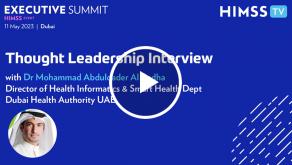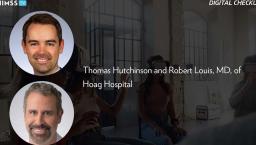What Earth's health systems can learn from space health

Credit: HIMSS
In delivering care to potentially hazardous areas on Earth, outer space can serve as an "ultimate edge case" for accelerating remote healthcare on Earth.
In the keynote panel "Blastoff! Propelling Digital Health with Lessons from Outer Space" at the HIMSS21 APAC Conference, Dr Aenor Sawyer, director of the University of California Space Health, gave insights on how innovation in space health can be used to accelerate digital health on Earth.
Dr Sawyer noted the "great parallels" between health care needs on Earth and in space. "We have resource constraints, limited supplies, limited power... We experience those same things as remote or low resource settings have."
In Earth's health systems' attempt to provide care in untapped environments, there is a "real need" to extend capabilities in distributed or remote health care, which includes good quality and validated sensing capabilities and "as closed-loop as possible" information that will guide patients in their decision making. Beyond telemedicine, there is also a need for quantification.
According to Dr Sawyer, there is an ongoing "cosmic" shift in human space exploration and medical and health planning as missions are getting longer in duration and farther in distance. Given "significant" logistical problems and challenges that come with these missions, such as the lack of real-time communication, evacuation and resupply capability, there is an emphasis now on an Earth-independent model or an augmented to autonomous (A2A) self-health and medical management model and on prevention and precision health.
Dr Sawyer explained: "We have to get to an understanding, as well as, detection of early states, preclinical states, [or] asymptomatic conditions that might predispose an athlete (referring to astronauts) to a medical condition. And if we could intervene early, we could prevent [those]. We also have to have a much better understanding of the individual differences and work on risk prediction upfront so that we can understand what they're going to need on board."
For example in space, upstream medical conditions like dehydration, stress and energy imbalance, which are also concerns on Earth, are being monitored through an integration of data and devices between there and here. "We do want to monitor you all the way around here so we want to prevent [those conditions] by catching it early," Dr Sawyer said.
This is part of a health sense matrix for space that Dr Sawyer and her team are working on in their lab. It is an integrated system that can provide dynamic and multiparametric sensing of health to generate actionable insights that are user-specific and provide evidence-based decision support where possible. "This also has to be a system that's of high value and low nuisance. It can't be intrusive to the astronaut or disruptive to their workflow," she added.
Through precision health and health sense matrix, it is possible to move towards A2A self-health and medical management system.
Dr Sawyer said there are already efforts on Earth around this. The US military, for instance, has started integrating multiparametric data streams from the battlefield to the rehabilitation centres.
UC Space Health and John Hopkins University have collaborated on a project in which data streams are integrated, contributing to the reduction of the seven highest causes of morbidity.
NASA, too, has started combining databases across health and human performance, as well as medical systems. It has built a platform that monitors astronauts' responses in exercise while in missions. "[The agency] is also looking at decision support and training support at real-time point-of-care and [it's continuously] testing remote technologies in the ISS," Dr Sawyer shared.
The HIMSS21 APAC Conference took place on 18 and 19 October. All sessions can be accessed on-demand by registering here. If you have already registered, log in here.






















